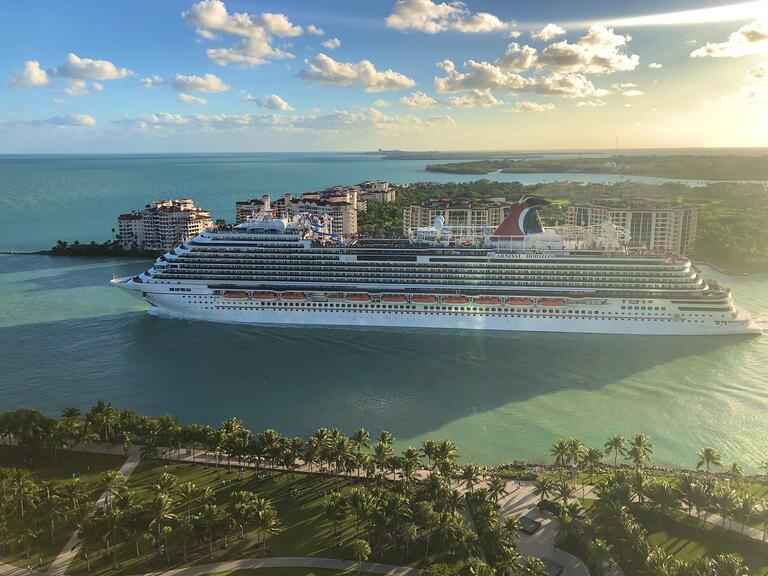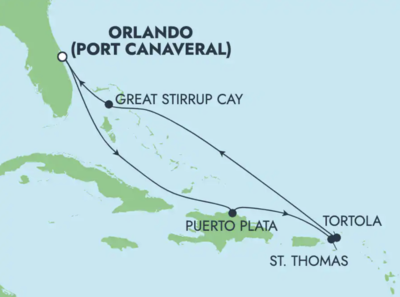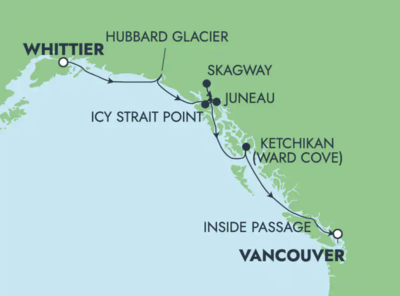
What Is A Closed-Loop Sailing?
A closed-loop sailing is a cruise ship voyage that begins and ends at the same port and in the same country. It is the most common type of cruise offered by cruise lines because the logistics for passengers are very simple.
In other words, it's easier to plan how you're getting to and from your cruise terminal without having to worry about one-way flights. By beginning and ending in the same port, roundtrip flights can be arranged and anyone who drives to the port will have their vehicle available at disembarkation.
The issue with closed-loop sailings is because the cruise ship has to return to its home port, it cannot travel as far. It is the opposite of an open-jaw sailing, where the cruise begins in one port and ends in another.
Key Takeaways
- Closed-loop sailings begin and end in the same port of call.
- These are the most popular types of cruise.
- The downside to closed-loop sailings is your voyage will visit fewer ports since your ship has to be able to return to where the cruise began.
- If you cruise frequently out of the same port, you may find yourself returning to the same ports of call. There are only so many ports that a cruise out of Miami can visit in 4 nights.
Understanding what a closed-loop sailing is
Closed-loop sailings are cruises where the voyage begins in a specific port and then returns to the same port at the end of the sailing. This is the predominant type of cruise option because it makes planning the cruise for passengers simple, and cruise lines can plan on ending one sailing and beginning the next one just a few hours later.
Most cruises on mainstream lines from the United States, Europe, and Australia have closed-loop sailings. Because cruises need to turn around and sail with a new group of passengers constantly, they make the most financial sense.
In the case of closed-loop cruises from the United States, these voyages must also include a stop in a foreign port in order to satisfy U.S. maritime law. As regulated by the Passenger Vessel Services Act (sometimes referred to as the Jones Act), a closed-loop sailing from the United States by a foreign-flagged vessel needs to stop somewhere outside the country.
The below itinerary on Norwegian Prima departing in July 2026 is a closed-loop cruise. It begins in Orlando (Port Canaveral), Florida, on July 12, 2026, and calls at Great Stirrup Cay, Tortola, St. Thomas, and Puerto Plata, before returning to Port Canaveral, Florida one week later.

It satisfies the Passenger Vessel Services Act because it stops in at least one foreign port.
What is the opposite of a closed-loop cruise?
If your cruise begins and ends in a different port, it is referred to as an open-jaw sailing. For these cruises, it is almost guaranteed that you will have to arrange transportation, as you cannot leave your car parked at the embarkation terminal when you are disembarking elsewhere.
Often, booking two one-way plane tickets can be more costly than a roundtrip. That is something to consider when you are faced with a great one-way cruise itinerary.
The below itinerary is an open-jaw sailing onboard Norwegian Jade in July 2026. It begins in Anchorage (Whittier), Alaska, and concludes 7 nights later in Vancouver, Canada.

Some cruisers prefer one-way sailings when traveling to more unique destinations like Alaska and Europe, as it allows them to explore more places. For example, if you cruise out of Barcelona and end in Rome, you can cross two famous cities off your bucket list!
Do you need a passport for a closed-loop cruise?
If your cruise is sailing from the United States on a closed-loop sailing, U.S. citizens are not required to have a passport. Instead, they can sail with just an original birth certificate.
Americans under the age of 16 can go on the sailing if they have one of these documents:
- An original, notarized, or certified copy of their birth certificate
- Consular Report of Birth Abroad issued by the Department of State
- Certificate of Naturalization issued by U.S. Citizenship and Immigration Services
Regardless, it is highly advisable to get a passport anyway. Having a passport ensures if you were to be stuck in any foreign country, you could easily return home without any problem.
While closed-loop sailings may not require a passport for U.S. citizens, some countries have their own rules and mandate everyone have a passport. There are relatively few of these countries, but they include Martinique, Cuba, and Barbados.
Read more: Where can you cruise without a passport?
